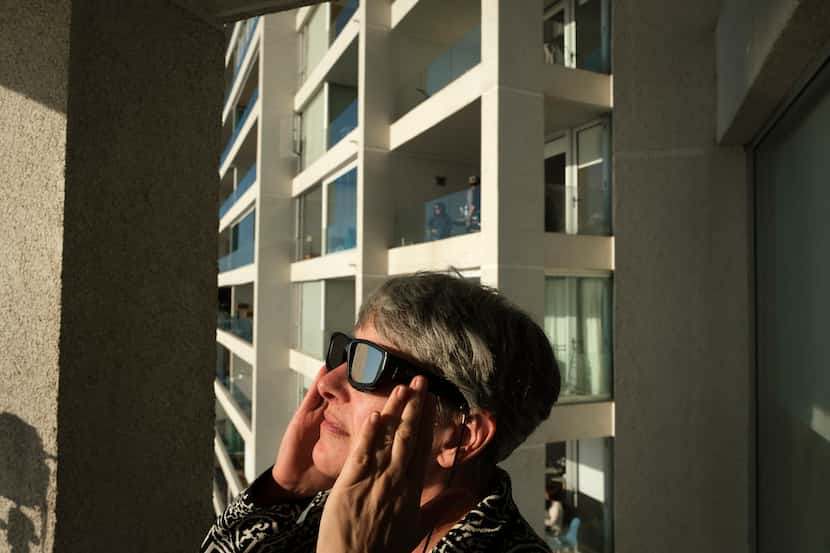Editor’s note: This story is part of The Dallas Morning News’ coverage of the 2024 total solar eclipse. For more, visit dallasnews.com/eclipse.
Viewing conditions for next month’s total solar eclipse are expected to be “cloudier than normal” in North Texas, the National Weather Service said in its first “sky outlook” released Friday morning.
The rare celestial event will take place April 8. It is expected to begin about 12:23 p.m. and last until just after 3 p.m., with totality — or total coverage of the sun — lasting from 1:40 to 1:44 p.m.
The weather service said conditions are trending cloudier than what historical data show is typical for April 8, with a 30% chance for favorable viewing conditions.
“Confidence is increasing that an active weather pattern may bring moisture and cloud cover with a chance of rain around the day of the eclipse,” NWS officials said.
Curious about what this outlook means? 🤔This far out, models aren't very skillful on forecasting cloud cover for a single hour. Focusing on the trends of these models & comparing them to what's "normal" gives us a better idea of what conditions may be April 8th. See below: pic.twitter.com/Sk1RWcVG9M
— NWS Fort Worth (@NWSFortWorth) March 29, 2024
With the event still being 10 days out, the weather service noted the full forecast remains “uncertain” and that the initial outlook does not mean the eclipse won’t be visible. Even if conditions were expected to be sunnier than normal, NWS said, that would not guarantee ideal viewing conditions.
Additionally, computer models also can’t determine hour-by-hour cloud coverage this far in advance, but the weather service said its meteorologists will closely monitor cloud trends over the next several days to determine how they’ll fare for the eclipse.
The weather service has said cloud cover could “make or break” plans to watch the once-in-a-lifetime event. Any amount of cloud cover will impact visibility, NWS said, but different types of clouds will have different levels of influence.
High clouds, if thin and transparent, would only somewhat obstruct the view, according to the weather service. Dense low clouds, however, would completely obscure it.
Stratus and cumulus clouds are common low clouds in North Texas during spring months, the weather service said. Stratus clouds often break up into cumulus clouds in the afternoon, and while the weather service said that might allow for better visibility, conditions would be “hit or miss.”


/cloudfront-us-east-1.images.arcpublishing.com/dmn/FMJJOLUXTJFI3PPLRPMQCJZJ5U.jpg)
/cloudfront-us-east-1.images.arcpublishing.com/dmn/67GSBQTYZ3ON3MHE6OOJJAJTLQ.jpg)
/cloudfront-us-east-1.images.arcpublishing.com/dmn/JXSNOOPIGJTP727DBIGISRCO2U.jpg)
/cloudfront-us-east-1.images.arcpublishing.com/dmn/65AXLJWDLFCMHFWT2R5HRGOAX4.jpg)
/cloudfront-us-east-1.images.arcpublishing.com/dmn/GKC4AJBQQZCUTFOU35D3OIQCQU.jpg)